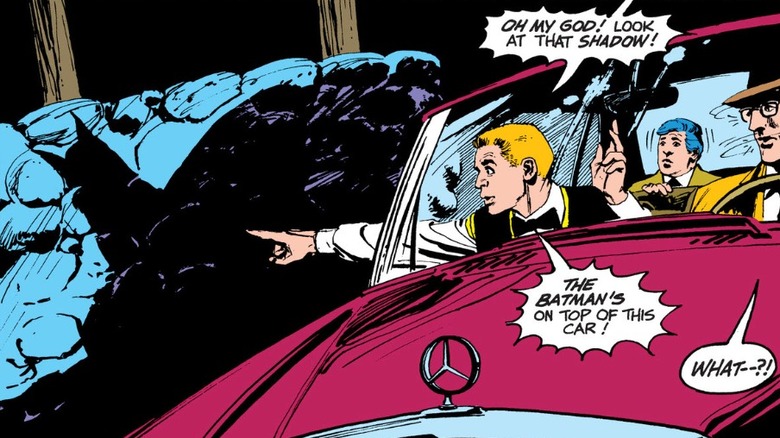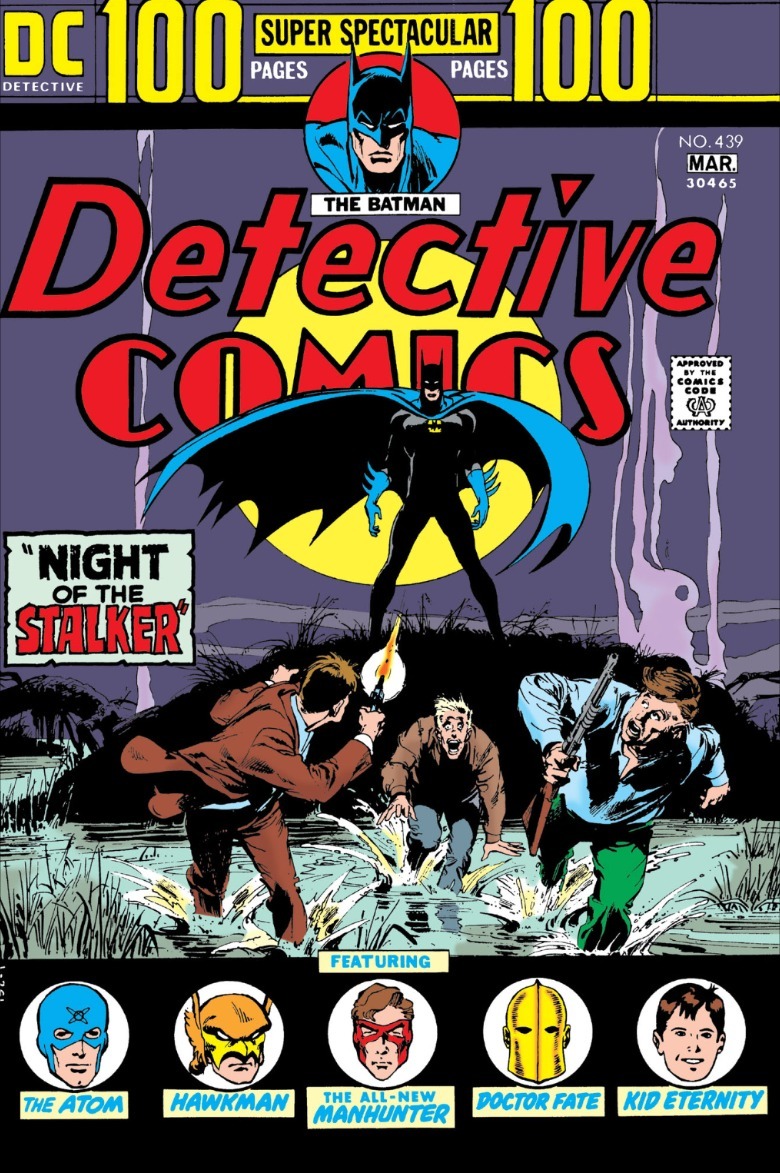Tim Burton's Batman Opening Is A Secret Adaptation Of This DC Comics Story
We may receive a commission on purchases made from links.
Though Tim Burton's gothic aesthetic fit Batman and Gotham City like a glove, his two "Batman" movies are hardly the work of a lifetime Bat-fan. The movies take huge liberties with the source material, like making the Joker (Jack Nicholson) the one who killed Bruce Wayne's parents.
However, there was at least one hardcore Batman fan working on the film: executive producer Michael Uslan. A Batman fan since childhood (his 2019 memoir is titled "The Boy Who Loved Batman"), Uslan actually purchased the Batman film rights in 1979 with his creative partner, the late Ben Melniker.Uslan had long wanted to make a serious movie that showed the full potential of the Dark Knight. With 1989's "Batman," he got his wish, and he's been an executive producer on every Batman film since.
Speaking to Batman On Film in 2014, Uslan mentioned the opening of Burton's "Batman" was a homage to one of his favorite Batman comics, "Night of the Stalker!" Published in 1974, "Stalker" is the opening story of "Detective Comics" #439, scripted by Steve Englehart and plotted by husband-and-wife duo Sal & Vin Amendola. (Sal drew the comic as well.)
Burton's "Batman" opens by setting the scene of Gotham City. A couple and their young son exit a movie theater, but unable to get a taxi, they take a shortcut down an alley and run into muggers. You think that this is the Wayne family at first, and we're watching Batman's origin. Then the muggers just take the money and run. The scene cuts to a high-angle wide shot, as if someone is watching the scene from a rooftop. Cue Batman (Michael Keaton) confronting the two muggers and putting the fear of God in them.
"Night of the Stalker!" similarly recreates Batman's origin for him to witness and then avenge.
Night of the Stalker shows Batman from criminals' perspective
The cover for "Detective Comics" #439 (see below) teases "Night of the Stalker!" It's a simple but evocative image: A moonlit Batman is standing on a dark hill looking down on three men fleeing from him in a swamp. What did these men do?
The story begins with Batman standing on a rooftop watching over Gotham, a narrator saying: "As always, [Batman] knows the coming darkness will bring a need for him." The "darkness," meaning both nightfall and the criminals it brings out, soon arrives. A robber bursts out of a bank and accidentally shoots a woman in front of her husband and young son. One of the robbers' partners then kills the new widower himself, making their son an orphan. Batman suffers a brief, painful flashback of his parents' murder before leaping into action. He beats the first killer, but the remaining three speed away in their getaway car. Batman spends the rest of the night tracking them through the outskirts of Gotham. Though the story predates the popularity of slasher movies, it follows a similar structure — with Batman as the unrelenting slasher.
It's even darker than the scene in Burton's "Batman," because the crime isn't just robbery, it's a double murder. Batman sees the tragedy that created him play out again and another young boy being left an orphan. It's also a brilliant premise for a "Batman" comic. A young Bruce Wayne vowed to battle criminals in his parents' memory, and with this murder, he's failed that vow. Yet, it also gives him the opportunity to vicariously avenge his parents, hence his determination. Batman can never save his parents, but the crime he witnesses reminds him why he made his vow.
Night of the Stalker's place in Batman's legacy
Michael Uslan isn't the only Batman fan inspired by "Night of the Stalker!" Decades later, the story was adapted and redrawn by comic writer/artist Darwyn Cooke with a new fitting title: "Déjà Vu." It's not a panel-for-panel remake: "Deja Vu" uses red and orange as the background colors, amping up the stylization while also stripping out the narration to underline the action.
The book adds a few critical beats as well. There's a close-up of the now-orphaned boy lying in shock, but Batman has no time to comfort him because his parents' killers are getting away. The comic still ends with Bruce crying before his parents' portrait, but the final panel now shows a solemn Alfred observing Batman from a cracked door.
"Déjà Vu" appears in Cooke's collection "Batman: Ego and Other Tails." (One of the included stories, "Selina's Big Score," features Catwoman, hence "Tails.") He explained he'd first conceived the story in 1998, when he redrew "Night of the Stalker!" in the style of "Batman Adventures," the tie-in comic to "Batman: The Animated Series." The story was written by Bruce Timm, co-creator of "Batman: The Animated Series," but rejected by DC. For his 2005 issue of creator anthology "Solo," Cooke finally published "Deja Vu," rewritten by himself (with Timm's approval).
Indeed, "Night of the Stalker!" could've been a great episode of "Batman: The Animated Series." It's a short, self-contained, and atmospheric story in line with that show's tone, although the plot hinging on an explicit double murder might've been too much for the censors. If we're lucky, perhaps Timm will adapt "Night of the Stalker!" as an episode of his adult-oriented Batman cartoon, "Batman: Caped Crusader." Another retelling of this story would be welcome déjà vu.



